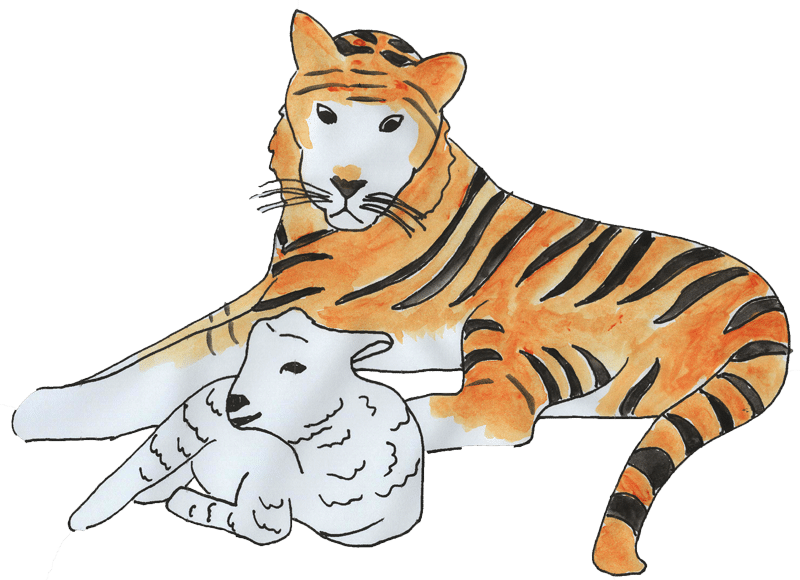This exploration is for all ages, as the colored smilies show. You can learn about The Lamb and The Tyger, poems by William Blake, with your whole family.



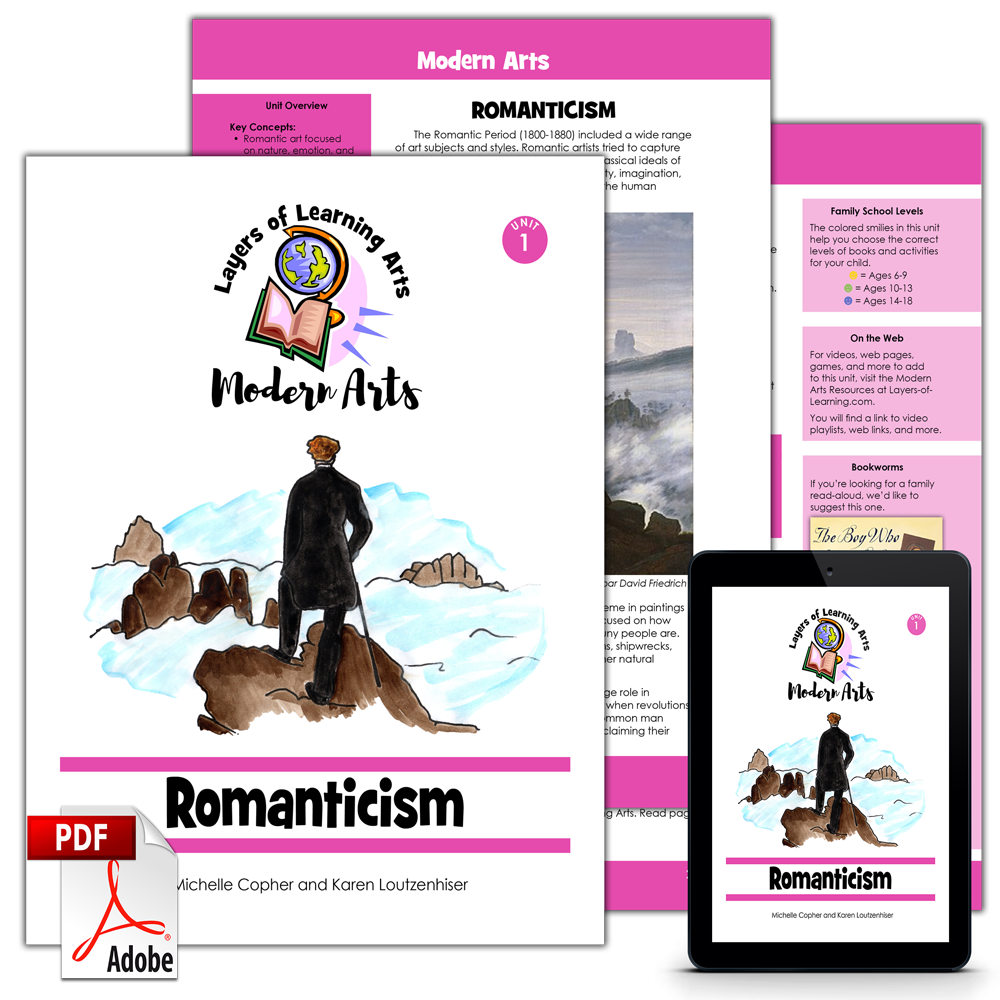
The Lamb and The Tyger is a poetry exploration from Modern Arts: Romanticism from the Romantic Period, the time period just following the American and French revolutions. Layers of Learning has hands-on projects in every unit of this family-friendly curriculum. You’ll also find great discussion questions and writing topics too. Learn more about Layers of Learning by visiting the Curriculum Guide.
William Blake was a Romantic poet who wrote a collection of poems called Songs of Innocence and Experience. The Lamb and The Tyger are two poems from his collection. They are great for reading with kids because they are easily explained and are about familiar animals. In addition, the ideas within them are big enough for older kids to really be able to learn from and discuss. So everyone in your family can get in on this lesson.
Many of the poems Blake wrote have companion poems that contrast with each other, and these are two of them. They show the differences between childlike innocence and worldly experience. Also, Blake explored the idea that there are two sides to people – the good and the evil. In this poem pairing, he uses two animals that seem quite opposite from each other – a lamb and a tiger (he spells it “Tyger”). The lamb represents good, or innocence, while the tiger represents
Step 1: Library Research
As you learn about Romantic literature, be sure to explore several poets and authors so you can compare the ideas within them. During the Romantic Period, there was a focus on childhood and innocence, nature, strong emotions, and imagination. As you read some Romantic literature together, you can try to spot these themes. Here are some suggestions for books with Romantic poetry and prose within them. They will be excellent companions to your study of The Lamb and The Tyger. The colored smilies above each book tell you what age level they’re recommended for.
As Amazon affiliates, the recommended books and products below kick back a tiny percentage of your purchase to us. It doesn’t affect your cost and it helps us run our website. We thank you!

A Child’s Garden of Verses
by Robert Louis Stevenson & Tasha Tudor

The Penguin Book of Romantic Poetry
by Jonathan & Jessica Wordsworth


William Blake: The Complete Illuminated Books
by William Blake

William Blake was both a poet and an artist. In this volume you can see the illuminated art he created to accompany his poems, including The Lamb and The Tyger. Warning: some of his illuminations include nudity, so you’ll want to preview this.
Step 2: Exploring The Poems
For this exploration, you just need these printables of the poems and a chart you will use to compare them. Here are some printable versions of them.
Read each of the poems, talking about them as you go.
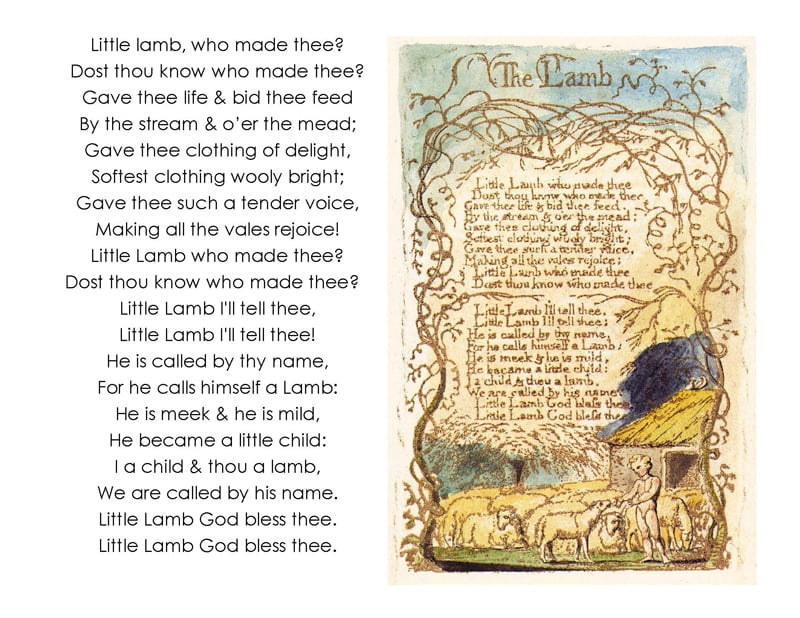
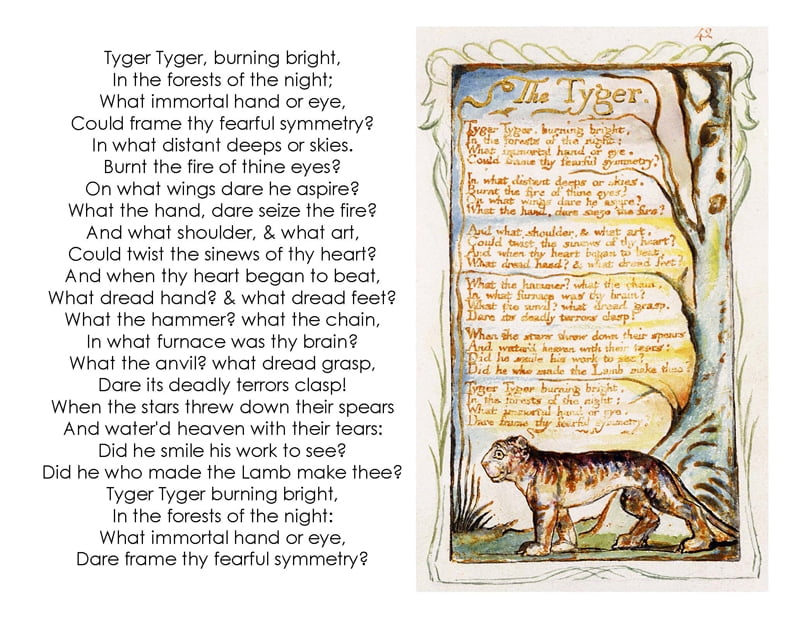
Now that we’ve read the poems, let’s talk about them. Either of these poems could stand on their own, but they have even more of an impact when you take the two together. First, what do you think William Blake’s point was? With little ones, you can stick to the simple ideas of how a lamb represents goodness and how a tiger shows evil. In addition, older kids can dig deeper with the following discussion.
For middle grades and high schoolers


Discussion Questions:
- In the poems, Blake claims that if God created both of these creatures, there must be something reflected about who God is in each creature. Do you think that art always reflects who an artist is? Does a story or article or poem always reflect who the author is? D
oes a building reflect who its architect is? - The two poems discuss the idea that the same God who created the gentle, innocent lamb also created the vicious tiger. This shows the bigger idea that there is both good and evil in the world and asks: Were both created by God? More importantly, what does that say about God?
- Even within one creature, the tiger, there is both beauty and terrible violence. Can you think of examples of things that are both beautiful and also horrific in the world?
- The Lamb uses the confident, trusting tone of a child’s innocent faith while The Tyger has only unanswered questions which, interestingly, represent experience. So does experience leave us with more questions or fewer questions? Can you give an example?
- Finally, what elements of Romanticism do you see within the poems? The trademarks of Romanticism include:
- Interest in common people
- Focus on childhood and innocence, along with natural goodness
- Strong emotions
- Awe and reverence for nature
Celebration of individuals, especially those who are outcasts or who are misunderstood- Recognition that imagination is important and legitimate
Step 3: Show What You Know
Use the chart from the printable to draw and describe the differences between The Lamb and The Tyger and what they represent.
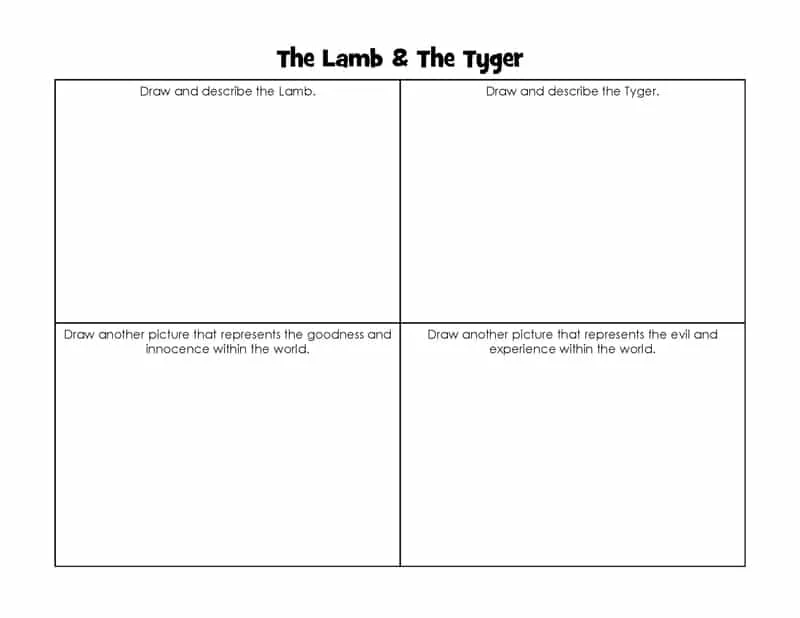
Additional Layers
Additional Layers are extra activities you can do, little rabbit trails you can take off on as you learn. You will find them in the sidebars of each Layers of Learning unit. They are optional, so just choose what interests you.
Writer’s Workshop
Write your own companion poems. Choose two ideas that are opposite from each other – knowledge and ignorance, greed and generosity, young and old, beauty and ugliness, or just being tall or short. Write two poems that compare your two ideas.
Like William Blake, you can also illustrate your poems. Pattern yours after The Lamb and The Tyger by creating an illustrated border like Blake did.
Famous Folks
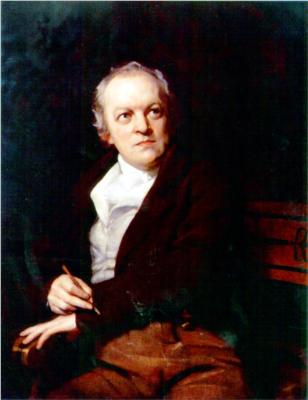
This portrait of William Blake was painted by Thomas Philips, who painted many of the important people of his day – the scientists, artists, poets, and explorers. Who would he paint if he were painting today?
Deep Thoughts
William Blake was religious, but he also fought against organized religion, and most of all, against The Church of England. What is the difference between religion and organized religion? What are the potential weaknesses of churches?
Hint to aid your discussion: The Church of England was formed after the King of England disagreed with the Pope. Many churches originated because of disagreements with other church leaders. They started their own churches to reflect how they saw God and religion. Do you go to church? Why or why not?
Get a Free Unit
Choose between the first unit in each Layers of Learning subject to try for free when you sign up for the newsletter.
We never spam and you can cancel your subscription at any time.


